If this Queen biopic doesn’t rock you, then Rami Malek most definitely will.
Highlighting some of Queen’s most memorable musical moments, “Bohemian Rhapsody” has an infectious energy that will lift you off your seat and make you want to start stomping and clapping along to some of the band’s greatest hits from the past century. In a Best Picture race that includes three more ambitious biopics (“BlacKkKlansman,” “Green Book” and “Vice”) and another tear-jerking musical feature (“A Star is Born”), the film shines through its young, believable cast along with a sensitive direction of Queen’s years-long trajectory from an enthusiastic band of artists to rock history’s most epic performers.
Malek is no longer the diamond-in-the-rough actor introduced to us at the turn of the decade. His performance as Queen frontman and universally-adored idol Freddie Mercury is calculated yet instinctive, and Malek moves through the highs and lows of the artist’s life with assertive steps and a commanding attitude.
Whenever Malek is on screen, you can rarely take your eyes off him. On stage, his Mercury enthralls the thousands that watch him; behind the scenes, he is near-goddamn divine. At the third act of the film, which has faced criticism for its sweeping disregard of Mercury’s queer identity, the character feels defenseless for the first time, but Malek still manages to deliver a knockout performance at the “Live Aid” concert, a scene that will be remembered long after awards show season.
Despite the changes in leadership, the direction doesn’t feel queasy. By contrast, it is outright audacious in placing Mercury at the center stage to explore his vision and his passions, while employing other bandmates as mere foils to his genius: characters that are too timid, too reserved, too “silent” to skyrocket the band into stardom. One of the movie’s recurring jokes is how drummer Roger Taylor and the producer of Queen’s fourth album wished to release a song titled “I’m in Love With My Car” as its lead single as opposed to the operatic, irrational, 6-minute-long and intensely hair-pulling “Bohemian Rhapsody” that has since defined the band’s legacy. In moments like this, it’s clear that Mercury is the film’s sole star, and that any other iteration failing to spotlight him as such would be a disservice — to him, and to Queen.
And the score helps elevate him, too. John Ottman, a frequent collaborator of the film’s first director, Bryan Singer, perfectly blends previously unreleased recordings with Malek and another singer’s voices to create the iconic “Live Aid” scenes. The placement of every song complements the arc of the band’s growth so nicely that, by the end, the performance of “We Are the Champions” will move you to tears.
But even “Bohemian Rhapsody’s” depiction of Mercury and the rock band is flawed. Perhaps a bolder film would’ve put more thought and nuance into Queen’s hedonism — after all, they did have a launch party in which guests snorted cocaine off trays strapped to hermaphrodite dwarves’ heads — as well as Mercury’s closeted sexuality and HIV diagnosis, which inspired him to delve deeper into his psyche to compose songs like “Who Wants to Live Forever” and “The Show Must Go On.” And if a bolder film does, maybe it will make up for the shortfalls here.
At the end of the day, “Bohemian Rhapsody” succeeds at painting a rich, technicolor fantasy of Queen’s life. It is flashy, sensational and at times vulgar and raw, but it’s never tasteless. No matter if you’re a die-hard fan or a new inductee to the band’s music, you’ll watch the end credits in tears and singing, for months to come and at the top of your lungs, burning through the sky. No one can stop you now.
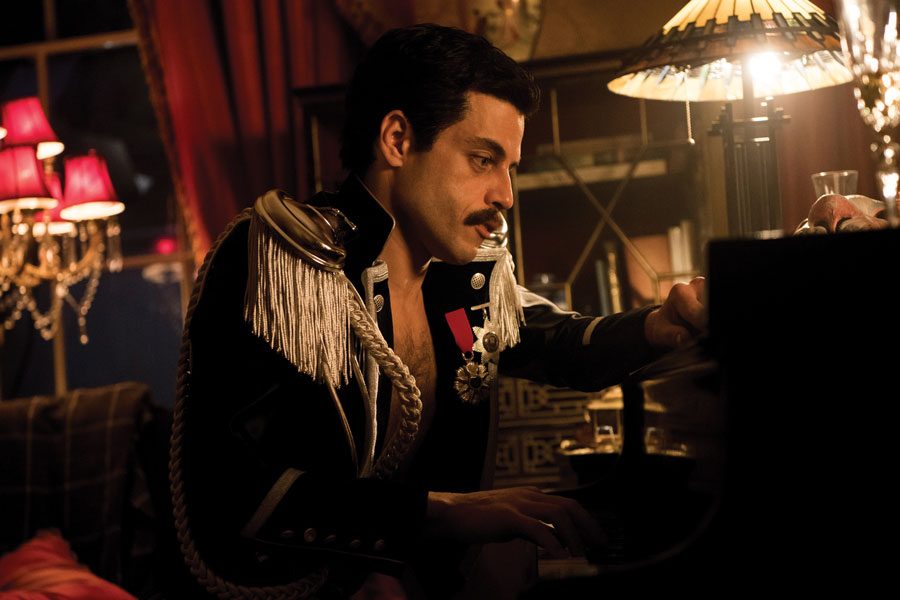
Source: Twentieth Century Fox Film Corporation
Before I start, a disclaimer.
“Green Book” tells the story of the unlikely friendship between a black, queer professional pianist and his Italian-American chauffeur as they navigate the Deep South on a musical tour. The movie has both been lauded and come under harsh criticism for its portrayal of interracial relationships and historic racism in the United States. As the human version of Wonder Bread, I don’t think it’s my place to make any kind of definitive statement about the quality of the movie in that regard.
However, as a straight woman, I feel more than equipped to thoroughly push for this movie to win Best Picture solely based on the plethora of feelings that overcame me while watching Mahershala Ali portray pianist Dr. Don Shirley.
Let us begin with the suits. As Barney Stinson once said, “Suits are full of joy. They’re the sartorial equivalent of a baby’s smile.” Well, baby, I was smiling. Every man in America needs to drag their ass to the tailor if they want any chance at love again, because after spending 130 glorious minutes watching Ali dazzle in suit after fitted suit, those of us attracted to men will no longer settle for ill-fitting Men’s Wearhouse clearance deals.
To be fair, it’s not just the suits that had me swooning. Ali made a mustard turtleneck look hot. He made a teal ascot — an ascot, I repeat — look sexy. Do you have any idea how difficult that is to do? Do you know how hard it is to wear the unwanted love-child of a tie and a scarf without looking like a complete idiot? The only other person to pull that off was Fred from “Scooby Doo” and even he doesn’t come close to the way Ali makes this castoff of the fashion industry the statement piece of the awards season.
But enough of judging the cover of this book, the content of the pages is where I really began to swoon. Shirley is a pianist. Being a musician is hot. Being a prodigious musician who can improv jazz harmonies in a bar, elicit virtuosic Chopin from a shitty piano and somehow make a trio consisting of a bass, piano and cello sound like a coherent product is a next level hot. Okay, I know I said I wouldn’t go back to the external trappings, but watching a guy confidently flick out his coattails as he sits down to create stirring music, well, I’ll have a tall glass of whatever that is.
Looking good in a tux and being able to play the piano isn’t enough though. We’ve all dated that hot musician who talked at length about his love for the earth and humankind but was really kind of an asshole. A douche Donald Shirley is not, though. No, this guy isn’t just a decent human being, he’s freaking Keats. When his driver, Tony, is struggling to express how he feels about his wife, Shirley helps Tony write love letters to her. Okay, so maybe they’re not exactly Shakespearean. In fact, Shirley suggests Tony compare his wife to the great plains of Iowa (ew). But it’s the thought that counts, and in the era of “u up” texts I know getting a love letter like the ones Shirley writes would have me in tears.
So, this awards season, vote for “Green Book.” Well, really, vote for Mahershala Ali, but for the purposes of this piece, vote for “Green Book.” Vote for beauty, vote for art, vote for love.
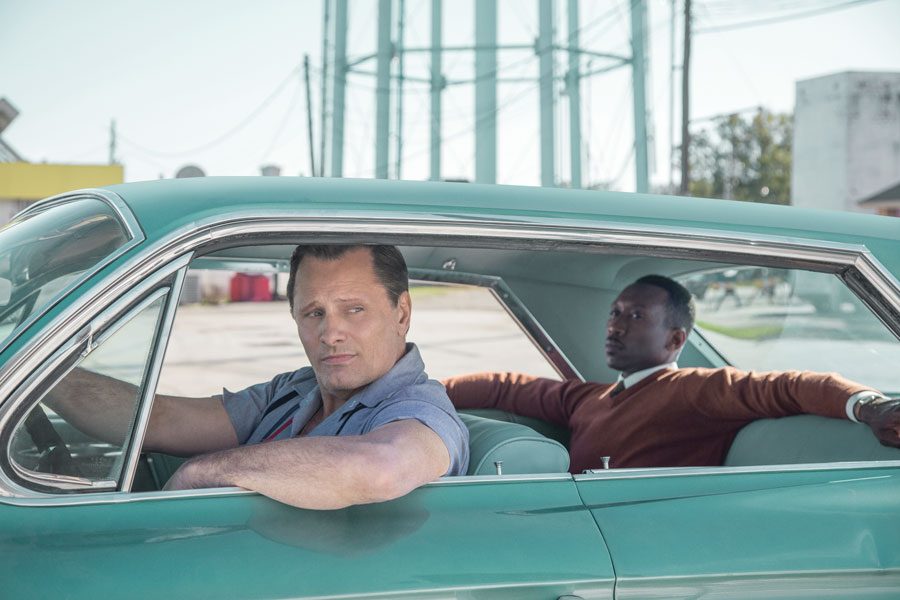
Source: Patti Perret/Universal Pictures, Participant, and DreamWorks
“BlacKkKlansman” begins with a coup de grâce.
We hear a staccato drum cadence over the opening credits, the sort that invokes “Apollo 13”; “Forrest Gump”; the entirety of Michael Bay’s oeuvre.
Then, in 4:3 ratio, a woman appears in the lavender dress, the southern belle navigating rows of writhing and moaning soldiers lying in red dirt. Horns play, reverent, dignified, with the tinkling of piano and the thrum of strings following in an orchestral crescendo.
The camera pulls up and away, a gonzo tracking shot that shows off more and more twisting bodies as we hear the woman cry, “God save the Confederacy!”
And then, battered but proud, crimson and navy on the Technicolor film stock, the Stars and Bars pull into focus, resolute in the wind.
It’s a moment so laden with melodrama that one could mistake the salacious imagery for parody – and given this is the rarely subdued director Spike Lee, that wouldn’t be a bad guess. He even employed a similar technique in his 1986 feature debut “She’s Gotta Have It,” setting a moment of satirical fantasy apart from the otherwise black-and-white aesthetic with striking Popsicle coloring.
But herein lies the masterstroke: The scene is no parody or deconstruction. It’s “Gone with the Wind,” the cinematic masterpiece, still the highest-grossing film ever made when adjusted for inflation. It is a great movie, arguably the greatest, and Lee rips it from its pedestal in 55 seconds flat.
“BlacKkKlansman” is Lee’s rebuttal to the Great White Epic; to “Gone with the Wind”; to “The Birth of a Nation,” the technically revolutionary racist fable that features heavily throughout “BlacKkKlansman”; and to every overwrought tale of American jingoism since.
Not that it doesn’t, at least for a while, indulge in the genre’s trappings. The set-up is certainly worthy of the shinIer, more woke historical dramas of recent memory: Lee tells the story of Ron Stallworth (John David Washington), a Colorado Springs policeman who infiltrated the Ku Klux Klan in the 1970s.
The dynamic of the police operation, with a white, Jewish cop (Adam Driver) impersonating “Ron Stallworth” to the Klansmen’s faces while the real Ron talks to them on the phone, is grade-A dramatic potential, with dashes of a good buddy cop story.
But Lee doesn’t quite buy into his own tale, and his refusal to engage in the status quo is immediate. An early scene at a Black Power rally that would be handled by most directors with detached objectivity becomes a moment of almost surreal empathy, with the faces of enraptured attendees emerging from a darkened screen. By contrast, Lee rushes through what would be a nail-biting standoff between Driver’s cop and a frothing-at-the-mouth Klansman demanding “Stallworth” take a lie detector test.
This contrarian approach carries throughout the film. The real Stallworth, embodying that well-worn notion of changing the system from the inside, faces far more scrutiny though Lee’s lens than we’re accustomed, and an ambiguous climax makes nobody look great.
That’s probably because Lee is more interested as a filmmaker in commenting on our modern circumstances than telling a feel-good story. As stated, Lee is not known for subtlety, and some of his louder moments feel almost cartoonish: a scene where Stallworth’s (white) sergeant explains to the officer how a Klansman could twist coded language into a path to the presidency is obnoxiously on-the-nose (and equally baffling given the film is set during the “law and order” presidency of Richard Nixon).
Far more effective is the chilling presentability of the Colorado Springs’ Klan president as well as the national director of the rebranded “Organization,” the real-life David Duke (Topher Grace). Lee dedicates significant screen time to split-screen phone calls between Stallworth and Duke, shot at Dutch angles meant to emphasize our unease even when the film overtly mocks Duke.
After that opening clip, we don’t hear the orchestra of “Gone with the Wind” again, though those staccato drums occasionally reappear. Instead, there’s the resigned electric guitar lick of composer Terence Blanchard, who has scored every Lee film since 1991.
The music nominally fits with the crime drama unfolding on screen, but the film doesn’t really care about that drama, and neither does the score. It doesn’t quicken with the action or rise in a moment of victory. It’s slow, mournful, plodding. It almost doesn’t fit.
Until the very end.
In a moment of cinematic boldness, Blanchard’s score sheds the electric guitar, Lee sheds his story, and we are subjected to a sustained moment of pure, unbridled sensation. It is Lee’s voice, unadulterated. It is rapture, and it is horror.
And it is “BlacKkKlansman.”
God save the Union.
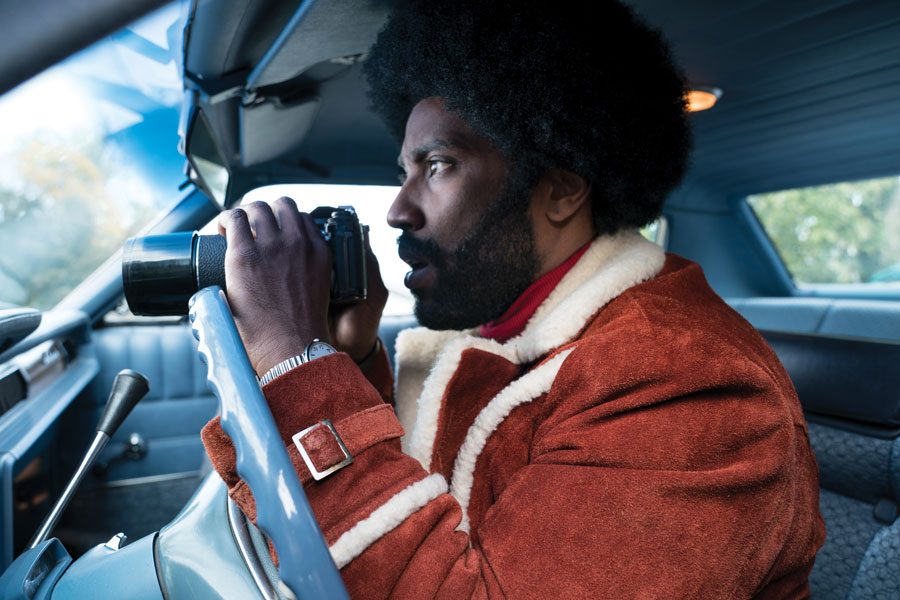
Source: David Lee/Focus Features
A race-winning duck named Horatio. Seventeen rabbits that run around and represent the death of children. Olivia Colman, Rachel Weisz and Emma Stone arguing, bickering and subverting power norms.
That should convince you. Oscar voters should hand Best Picture to Yorgos Lanthimos’ “The Favourite,” a dark, riotous comedy that takes aim at and interrogates power structures by telling the story of a love triangle with Queen Anne of England and two of her mischievous, scheming aides.
“The Favourite” is rife with backstabbing, scheming, power plays on power plays. It comments on today’s world by looking at the absurdity of how far people will go to gain and solidify power, and how that power corrupts them. It reminds us that under the veneer of civilization, chaos and insanity reign. Of course, you’ll probably forget that because you’ll be too busy laughing.
With such shenanigans, the movie showcases its three leads’ talents, who are at turns eccentric, charming and cruel. Yes, other Best Picture nominee leads may also provide stellar performances (Rami Malek’s Freddie Mercury, Christian Bale’s Satan — I mean Dick Cheney), but three powerhouse actresses fighting for power and screen time is just so much more exquisite and delectable.
Of particular note is Colman’s performance as the petulant, impulsive Queen Anne. Between fits of rage and spells of despair, we get a glimpse of the frightened, lonely human she is. The queen’s had 17 children who died in the womb or in childbirth, and suffers from intense gout — understandable that she’s quite eccentric.
Stone’s turn as the underdog schemer Abigail, a distant relative of Weisz’s Sarah, is also commendable. Stone subverts audiences’ expectations of the down-to-earth, good-hearted girl from “La La Land” and “Easy A.” Near the end of “The Favourite,” she slowly crushes a rabbit with her foot, letting up only when summoned by the queen. Although she’s ascended the court ranks and outwitted her political rivals, Abigail is still at the queen’s beck and call, unable to resist her demand for her legs to be rubbed.
Although “The Favourite” seems a little too avant-garde for the Academy, it’s not completely out of line. “The Artist,” “Birdman” and “Moonlight” all ultimately won and beat more traditional period pieces and dramas. In picking “The Favourite,” the Academy would honor the artistic and cinematic risks it takes.
The film is awkwardly beautiful, with unconventional angles and sweeping whip pans that blur the corners of shots. Harsh lighting and deep shadows, along with a discordant score, heighten the suspicion and tension of the movie. Such factors make it seem like the movie’s a chore to watch.
But “The Favourite” is easy — and fun — to watch. That likely has to do with the fact that this is the first movie Lanthimos has directed that he didn’t write; unlike his previous movies, absurd and psychological horror lie under witty dialogue and settings. A scene where Weisz and Joe Alwyn (Taylor Swift’s beau) show off ridiculous dance moves in a ballroom is absolutely hilarious, a test of how far Lanthimos can push his absurd world on people.
Under that levity, though, is the pesky, ever-present corruption from power. That the three female leads attempt to take charge of their lives and ultimately fail should somber viewers and haunt them long after they leave the theater. Each woman’s suffering floats through the screen and shapes who they are, who they want to be. “The Favourite” is about a flawed, wretched type of humanity, one that’s all too real and relatable, and that’s why it should win the Oscar.
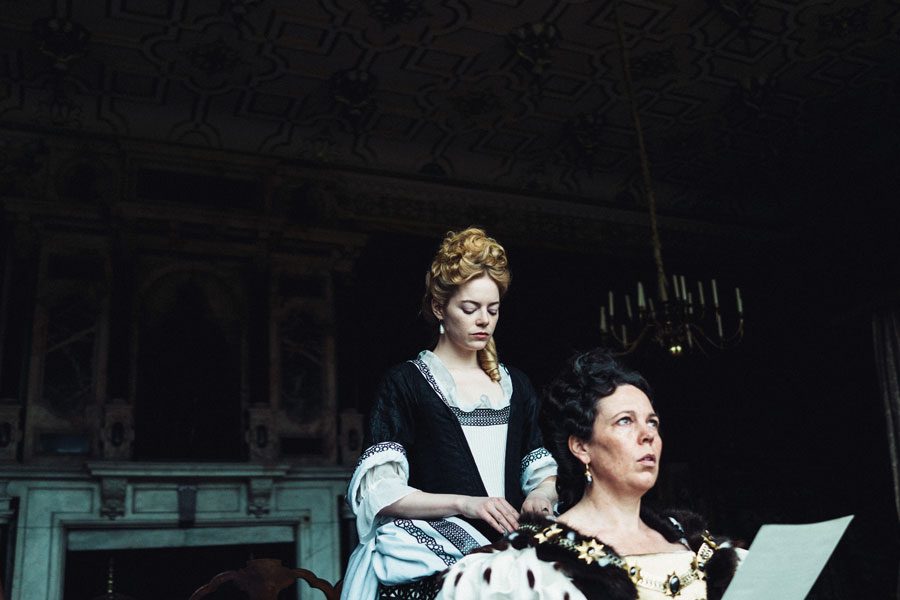
Source: Twentieth Century Fox Film Corporation
It’s a moment that transcends the film, the actors and even cinema itself. You know the one: Lady Gaga’s Ally, trepidation and anxiety evident in her shoulders, walks over to Bradley Cooper’s Jackson. She grabs the microphone with both hands, and delivers the guttural, electrifying string of vowels that has become synonymous with “A Star is Born”.
That’s the moment Ally fully gives herself over to the events of the plot she does not yet know, and it’s the moment I do too. “A Star is Born” seemed, from afar, to have the potential to go up in flames. Lady Gaga — she of the meat dress and the Super Bowl and rah rah ah ah ah — was playing opposite Bradley Cooper, who was essentially impersonating Sam Elliott’s voice with Elliott co-starring in the movie. From the trailer drop, it was evidently clear that this was a capital-S serious film. It could have been too much in a hundred different ways.
Yet, I believed Lady Gaga as Ally from one of her earliest moments on screen, as she took the trash out at the restaurant where she worked, walking away from the camera singing “Somewhere Over the Rainbow” to herself. Gaga’s performance is entirely lived-in and authentic, and her and Cooper are equals here.
“A Star is Born,” in its fourth iteration now, follows a basic script: a successful, troubled musician meets a down-on-her-luck singer. The two fall in love, but as Ally’s star starts to rise, Jackson’s starts to fade, to the point that he commits suicide rather than hold her back.
But Cooper’s “A Star is Born” takes that formula and amplifies the emotional weight behind it. Ally is given the space to initially, realistically be skeptical of Jackson and the idea that her career could take off overnight. A pop-rock dichotomy is introduced as part of Ally’s rise and Jackson’s fall, and while Jackson takes the stance that the pop Ally is peddling — not dissimilar to the music that made Gaga a star — is less authentic than the rock anthems they once performed together, the fact that fewer and fewer people show up for his music complicates that narrative.
Ally is both a dreamer and a realist, and it shows during the entire sequence of the night she and Jackson meet, when she allows herself to be vulnerable while still hesitant in the face of his persona and alcoholism. After the performance of “Shallow,” when Ally and a very drunk Jackson stumble around backstage together, her careful demeanor, nervous smile and the way she later speaks with conviction when deciding to lean into their relationship — belying premeditated thought — are distinctly, recognizably female. In a lesser movie, Ally’s trepidation and considerations would not be considered, and the film would be a meditation on fading masculinity that Jackson’s loss of control and career invite. That is a film that’s been made plenty of times, but Cooper’s script and Gaga’s delivery transcend it.
The movie deftly tackles questions of authenticity, alcoholism and familial betrayal, but at its core, this is an epic, sweeping love story. Gaga and Cooper are electric together from their first meeting, and the emotional touchstones of their relationship — impromptu songwriting, Jack’s “I just wanted to take another look at you” bit and his worship of Ally’s imperfect nose — are all the more devastating when they reappear in the couple’s final moments together at the end of the film. Whether it’s buying ice in a grocery store at their first meeting or Jackson’s tearful, distraught “I embarrassed you” apology to Ally in rehab, their connection radiates.
The use of mirroring positive and negative moments in their relationship makes them all the more devastating. Part of the allure of Jackson is that he finds the things that talent executives have said is wrong with Ally — her nose, her ‘look’ — to be the best things about her. When he calls her ugly in a scathing fight in a bathtub, recalling an earlier scene of happiness and bliss in the bath, the stakes are immediately heightened and intensified, with every word and shot packing emotional damage.
Ultimately, “A Star is Born” does not exist in a vacuum. It’s inextricably tied to the star power of its actors, the viral nature of its press tour, the “100 people in a room” meme and the origin stories of Cooper hearing Gaga perform “La Vie en Rose.” But, throughout the duration of the film, and particularly in moments like the “Shallow” performance, “A Star is Born” exists solely in the world that it’s so beautifully created — a world of transcendent music, great love gone bad and the ability of a film to enchant all 100 people in the room, to make all of them believe in it.
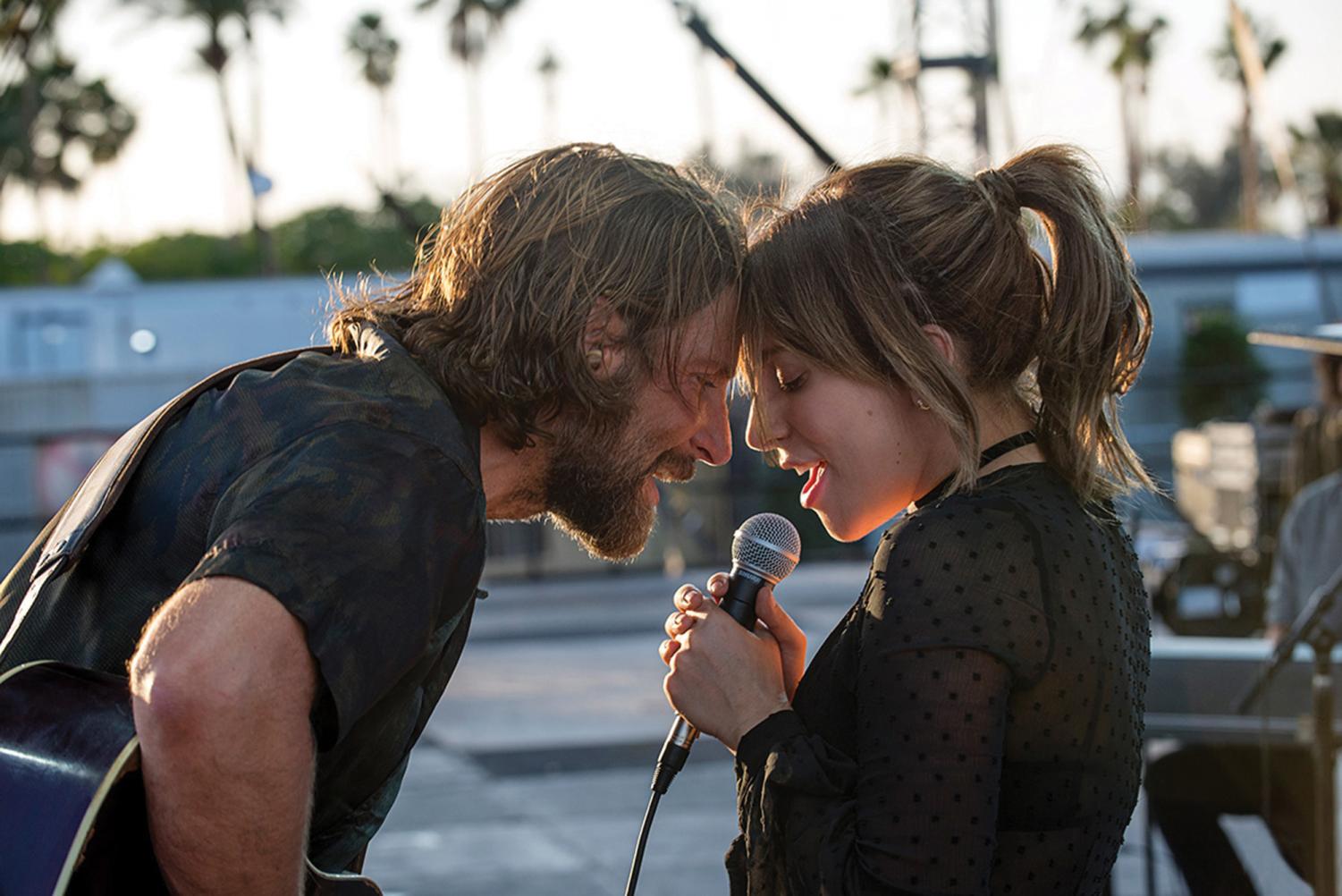
Source: Neal Preston/Warner Bros/TNS
On first scan, “Roma” appears to model the elements of films that have typically flooded the Oscars’ Best Foreign Film category: a hyperlocal setting; a simple, yet striking, plotline; a handful of complex characters that jump off the screen. But “Roma” is unique in that, despite these elements, the film transcends its Mexico City roots to deliver a story that isn’t so foreign — rather, it’s a tale that is sure to resonate with audiences across the globe.
Juggling a handful of roles as the director, cinematographer, producer, writer and editor, Alfonso Cuarón (“Gravity,” “Harry Potter and the Prisoner of Azkaban”) takes a wide look at life in the slowly modernizing Mexico City. Based off Cuarón’s childhood nanny, the film focuses on Cleo, played with brilliant vulnerability by first-time actress Yalitza Aparicio, a young indigenous woman who works as a maid for a middle-class white family.
Set in the 1970s, Cuarón’s epic turns a more critical eye to the late 20th century than, say, “Bohemian Rhapsody” or “Green Book” — films that appear to disinfect and romanticize the decades prior so we may, for two hours, forget about the ongoing political moment. Cuarón, instead, takes a singular approach and focuses on the aftershocks of centuries of colonialism through the story of one woman. The use of black and white feels as though you’re witnessing history in the making, even as you are watching a simple slice of Cleo’s life.
“Roma,” named after the Roma neighborhood in Mexico City, makes the case that the issues it tackles do not just apply to this one family. There is ample use of realism here — the family’s house is located across the street from Cuarón’s childhood home. Cuarón auditioned over 3,000 women for the role of Cleo, finally landing upon Aparicio because she embodied the empathetic nature of his childhood nanny.
The movie tells its narrative in plain detail, with long, wide takes allowing the viewer to notice what is left out of the dialogue. The care with which Cleo scrubs the floors, serves food and puts the children to sleep; the cycle of verbal abuse that perpetuates from husband to wife to Cleo; the horror and sadness Cleo feels when she gives birth to a stillborn — they’re all scenes in which Cuarón uses the camera as a lens to what life is like in this moment, in this place and time.
But the film’s setting does not make its themes feel any less pressing. It uses its two main female characters, Cleo and Sofía — the struggling matriarch of the family — to mirror one another as the men in their lives betray and abandon them. The women build each other up, despite their flaws, to keep the family whole. These are not problems that are relegated to a black and white history book; these issues plague women across the world, no matter the socioeconomic context, their race or background. Even the abject pain Cleo suffers while holding her stillborn child to the revelation that she did not want this child in the first place is a shared emotion in the female consciousness. That scene is not one I will soon forget.
“Roma” is up for a number of accolades this year at the 91st Academy Awards, tied with “The Favourite” for ten nominations apiece, many of them historic. Aparicio is the first indigenous woman to be nominated for Best Actress. The film is tied with “Crouching Tiger, Hidden Dragon” (2000) for most nominations for a foreign language film. It is also only the tenth foreign language film to be nominated for Best Picture — if it wins, it will become the first foreign language film ever to go home with the top prize.
Giving “Roma” the Best Picture award would reward not only Cuarón for his deft filmmaking, but other artists who use film as a medium to depict a more accurate landscape of the world. As Hollywood has become ensnared in scandal — from #OscarsSoWhite to #MeToo — viewers have been demanding more representation in film.
According to UCLA’s 2018 Hollywood Diversity Report, women made up 31.2 percent of leads in top films, and minorities made up a mere 13.9 percent (the latter would have to triple to reach proportional representation). “Roma” turns its lens onto a often glanced-over slice of society, giving the story the attention and artistic treatment it deserves.
Even more so, the Oscars should honor this movie’s authenticity. Its seemingly ordinary narrative, the use of native language and its grounding in reality all combine to craft a story that transcends one woman. It shows how we all struggle, how people let us down. The film gives you a slice of Cleo’s life — her pain and her fortitude — and hopes you learn something from it. I just hope the Academy does, too.

Source: Alfonso Cuarón
Ryan Coogler’s “Black Panther” could’ve been yet another addition to a long line of superhero films in a drawn-out franchise. After all, with 17 films under its belt, the Marvel Cinematic Universe had all but perfected the art of the modern superhero movie. This time, though, the studio took a risk and created a picture that not only diverged from its genre norms but redefined them altogether, creating a captivating story and a worldwide sensation. For that, “Black Panther” is more than worthy of the Best Picture win at this year’s Academy Awards.
“Black Panther” tells the story of T’Challa (Chadwick Boseman), who returns to the Afrofuturistic nation of Wakanda to assume the throne after his father dies. Faced with opposition to his ruling and two villains who are determined to destroy Wakanda, T’Challa sets out to protect his people from an all-out war.
At its core, this is a grassroots Marvel movie; there’s violence and fight scenes galore from the get-go, a mix of clever dialogue and witty humor, “the fate of the world is in your hands”-type stakes, a seemingly all-powerful substance that every villain pursues — all climaxing into a dramatic fight scene in the third act.
This is hardly your average superhero movie, though. Led by a predominantly black A-list cast including Boseman, Michael B. Jordan (“Creed,” “Fruitvale Station”), Lupita Nyong’o (“12 Years a Slave”), Danai Gurira and Letitia Wright, “Black Panther” is a celebration of black culture that doesn’t shy away from providing commentary that extends beyond snarky comments on Thor’s abs.
While the movie’s backdrop, Wakanda, is thought to be a developing country to the outside world, the nation is actually ripe with innovation and breakthrough scientific technology. Through this world, the film explores the untapped possibilities for Africa had it not been plumaged of its resources and exploited by colonialism. And while, yes, this is a highly fictitious, superhero movie, “Black Panther” distinguishes itself in the genre by exploring themes like these that often go ignored or end up whitewashed in mainstream media.
The cast of “Black Panther” is also no less than stellar. And while Boseman shone in the lead role of T’Challa, the real heroes of this movie were the badass women of Wakanda — specifically Shuri, Nakia and Okoye — who stole the show with their nuanced performances and defining character traits that made them excel in science, leadership and combat, along with Jordan dominating in his role as the poised but villainous Erik Killmonger.
Marvel put in the work to develop these characters as individuals, and it shows. Killmonger, especially, is one of the greatest villains Marvel films — and superhero movies in general — have seen in a long time, not just because of his superb acting, but also because of his complex motives. Killmonger believes Wakanda has an obligation to equip oppressed people of African descent with the resources to overthrow their oppressors. His motives are understandable, if not fully justifiable, leaving audiences wondering if he’s really the villain as the end credits roll.
Whether you’re a die-hard Marvel fan or have yet to be enticed into the MCU, “Black Panther” commands your attention and holds it until the very end. This isn’t just a film; it’s a cultural phenomenon that boasts an incredible cast and three-dimensional characters, and doesn’t shy away from tackling major issues head-on, unapologetically.
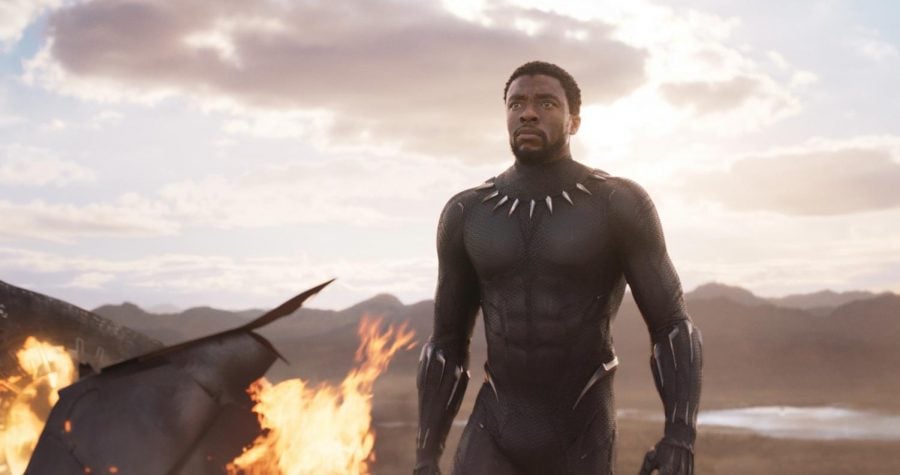
Source: Marvel Studios
The term “biopic” conjures up ideas of stuffy narration, clunky reenactments and a dry approach to history. Most importantly, it implies removed objectivity and undeniable fact.
“Vice” — the 2018 comedy-drama about former vice president Dick Cheney — throws all those notions out the window. The movie is a fast-paced romp through Cheney’s life and his rise to power as a singularly influential vice president under George W. Bush. It doesn’t shy away from spinning history with perspective, flair and a healthy serving of overt criticism. And it doesn’t even claim to be a fully accurate recounting, acknowledging that it’s hard to get into the head of one of the most notoriously secretive government figures in recent history.
When it comes to the facts, “we did our f—ing best,” a pre-film caption proclaims.
The film is now up for Best Picture at the Academy Awards, and deservedly so. It uses fun, risk-taking storytelling to take on a complex subject and make it feel deeply relevant to the modern viewer. As audience members, we get wrapped up in both the personal tensions and the political schemings of a protagonist who stealthily shaped the world we live in today.
Christian Bale disappears into his lead role as the movie’s antihero, adopting 40 extra pounds, a new prosthetic-based face and a low, vaguely Midwestern growl of a voice for the transformation. The supporting cast also shines: Amy Adams, in a choppy mom bob, blends shrewd calculation and traditional wifely supportiveness as Lynne Cheney, while Sam Rockwell has fun as a charismatic but oblivious George W. Bush. (Bale, Adams and Rockwell are all nominated for acting awards at the Oscars.) Steve Carell gets to play to his strengths as a brash and sometimes insensitive Donald Rumsfeld, Cheney’s mentor at the beginning of his tenure in Congress.
Director Adam McKay uses a lot of the stylistic flourishes audiences might recognize from his 2015 film “The Big Short” (also a Best Picture nominee). Montages of archival media footage build up the atmosphere of the early-2000s setting and ground the film’s glossy reenactments in raw, undeniable reality. Cheeky meta moments break the fourth wall to explain policy to audiences through the mouths of waiters, politicians and a mystery narrator, whose unknown identity adds some suspense to a film with a main plot that is largely Google-able. The entire movie has a sense of fun about it, like McKay is winking at audience members — whom he assumes will be in-the-know about U.S. politics as well as alternative film tropes.
It’s not all tongue-in-cheek, though; McKay and his team make sure to constantly emphasize the real and lasting implications of these seemingly dry political decisions. Jump cuts link a handshake in D.C. with a village being bombed in Cambodia, or a memo draft with prisoners being tortured in Guantanamo Bay. They show how Cheney’s journey from small-town Nebraska to the White House has effects that stretch to all corners of the world — and they feel completely, upsettingly relevant today.
The cinematography and score also serve to underscore potentially mundane actions with an almost exaggerated sense of drama. Close-up shots and high-contrast lighting heighten what is essentially a few men running around a few D.C. buildings to a scale that feels epic, and Nicholas Britell’s brass-heavy soundtrack further elevates the action.
“Vice” is not a perfect film. It’s wild, and engaging and ambitious, but it’s also messy, playing a little fast and loose with the truth and leaving some character motives feeling fuzzy. Maybe the film bites off more than it can chew in the end. Still, the fearlessness with which it takes risks — both stylistic and political — deserves to be recognized.
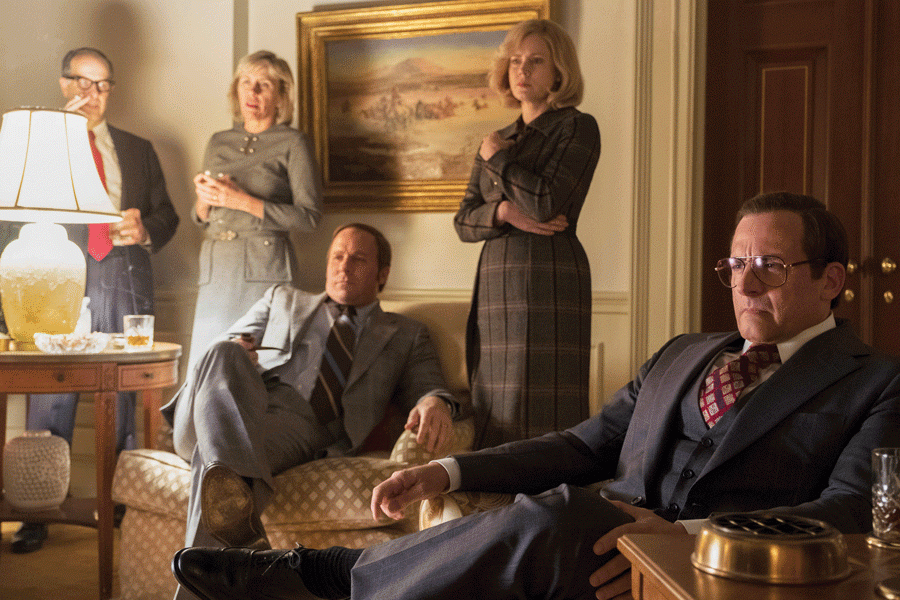
Source: Annapurna Pictures
